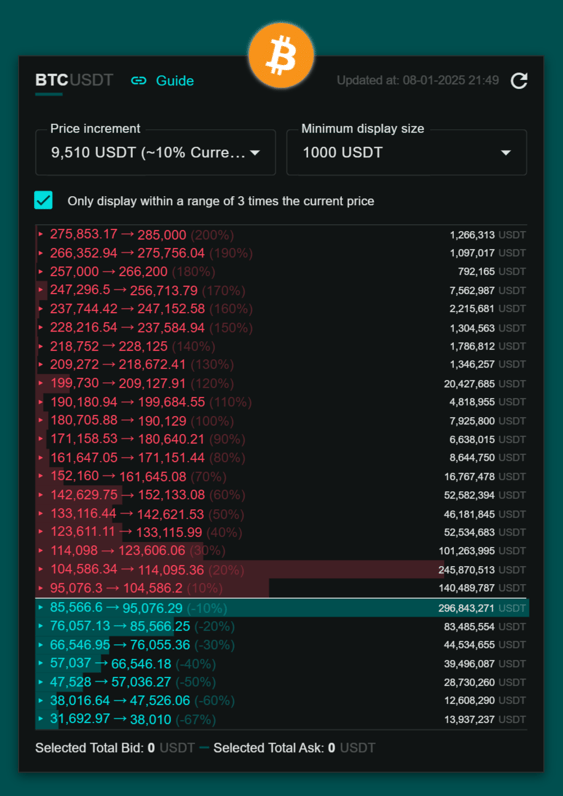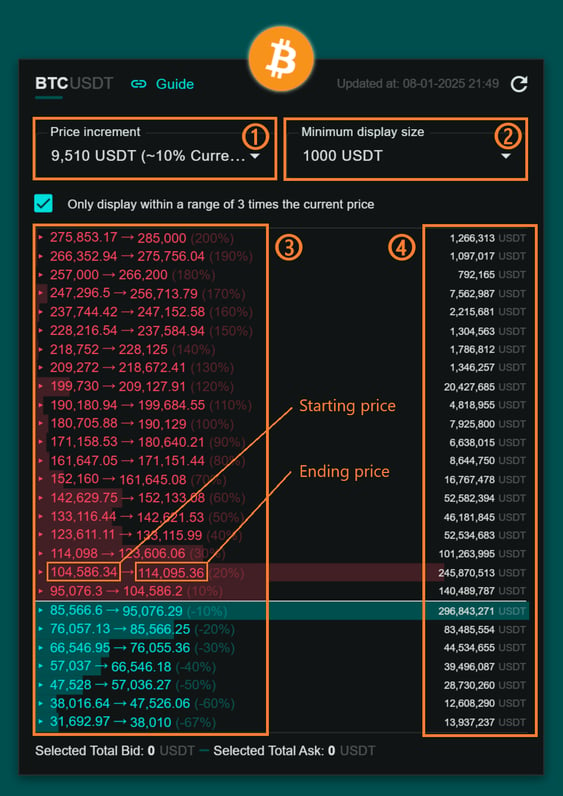Explain the function of Order Book
⁜
Function Introduction
This function provides detailed information about the order book of any trading pair at the most recent time, similar to the order book feature on Binance but without display range limitations.
Data is updated in real time and fetched directly from Binance, ensuring accuracy and speed. You can monitor detailed levels of bid and ask prices waiting to be matched, along with their corresponding trading volumes. This function helps traders analyze the market more effectively, identify potential support and resistance zones, and make informed trading decisions.


Detailed Components
Area ① and ②: These are filters used to customize the display of areas ③ and ④.
Area ③ and ④: Display detailed information about orders in the order book:
Red section (top): Represents the group of limit sell orders.
Green section (bottom): Represents the group of limit buy orders.
Area ③: Displays multiple rows, with each row representing a group of orders from [starting price → ending price]. For example:
Red row [95,076.3 → 104,586.2]: Includes all limit sell orders from the price range 95,076.3 to 104,586.2.
Green row [85,566.6 → 95,076.29]: Includes all limit buy orders from the price range 85,566.6 to 95,076.29.
Area ①: Allows customization of the price range for
[starting price → ending price].
Area ④: Displays the total value of all orders within the range
[starting price → ending price].
Area ②: Sets a minimum value threshold for orders to be included in area ④.
For example: If the minimum value is set to 1,000 USDT, area ④ will only calculate the total value of orders that are 1,000 USDT or greater within the range [starting price → ending price].


Contact
Customer Support & Care Department
support@marketorderinsight.com


Partners
business@marketorderinsight.com
© 2025 Market Order Insight. All Rights Reserved


About Us
User Guide
Market Order Insight - A comprehensive CEX data analysis platform that helps you uncover critical information behind price fluctuations, enabling more accurate and effective investment decisions.
